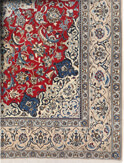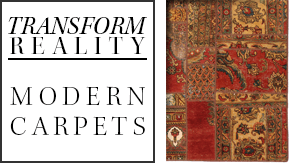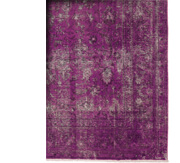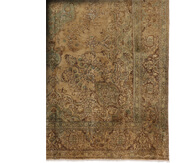Hand Made Persian Carpet Designs Are Enduring Masterpieces
Carpet Designs
Persian carpets are considered by many as the most exquisite and beautiful of all carpets. This is because the carpets executed by each weaver are one-of-a-kind, handmade masterpieces. The design of an oriental carpet is not merely combinations of colors and motifs. A well-designed carpet has its own symmetry that includes the size and shape of the rug, type of knotting, quality of wool, definition of color and type and execution of motif.
Types of Designs
Persian carpet designs are categorized in several ways. Carpets are often referred to as city, tribal, village or town rugs. This designation reflects the type of workshop that created the carpet. The designation also reflects the historical and cultural heritage of the weavers.
City Carpets
In the 1500s, Shah Abbas, head of the Safavid Empire, developed carpet workshops in major cities that wove highly ornate, curvilinear designs on carpets. Isfahan was the center of the empire and produced graceful, highly refined rugs in stunning colors. These antique carpets are called city rugs. The tradition of city rug weaving continues. Master weaver Haji Jalili in the late 19th century used innovative combinations of color and pattern that reflect the high standards of Safavid city carpets. Today, master weavers such as Master Haj Agha Reza Seirafian and his sons continue this tradition of creating masterpieces in the classical tradition.
Tribal Carpets
On the other end of the scale are tribal carpets. These lovely rugs are made in rural areas by tribal women of specific ethnic groups, who weave the events and traditions of their daily lives into the patterns. Bold colors and geometric motifs are typical of these rugs. The Kurds are famed for their artistic renderings in styles such as Bijar, which uses unique hues of blues and reds in traditional motifs such as Herati. Tribal carpets are woven for daily use, not with the intention of selling them.
Village Carpets
Village carpets often exhibit the informal, creative aspect of tribal rugs but also incorporate the more complex designs of city carpets. Local weavers in regional villages work on handmade looms, adapting color combinations and motifs from both traditions to create unique designs. These rugs are woven to sell. Weavers are often part of a regional cottage industry. Examples of village carpets include Serapi and Malayer styles.
Town Carpets
Town carpets often used curvilinear designs typical of city traditions. However, designs are more informal. The skills and art of each weaver are often expressed in color combinations and patterns. Ferahan Sarouks and Sultanabads are two of the better-known town carpet styles.
Pattern and Motif
Rug design is also characterized by the way motifs are placed over the surface of the rug. Some carpets, such as those from the Caucasus, feature large, stylized geometrical motifs. Motifs typical of classical Persian rugs, such as those from Nain, display graceful arcs intertwined into patterns of clusters of flowers, vines, leaves, animals and, rarely, human forms.
Most carpets have a distinctive border with colors and motifs that complement the main area of the rug. Some have ornately worked corners, or spandrels, that contribute to the beauty of the design. Some feature all-over designs, like the famed Ardabil Carpet, while tribal designs may display whimsically placed rectilinear motifs that add to the charm.
Although several motifs, such as Herati and Shah Abbas, are used in many styles of rugs, each hand-knotted carpet is unlike any other. The combination of colors, placement of motifs, complexity of borders and luster of the wool all contribute to the unique, artistic rendering of each rug.






